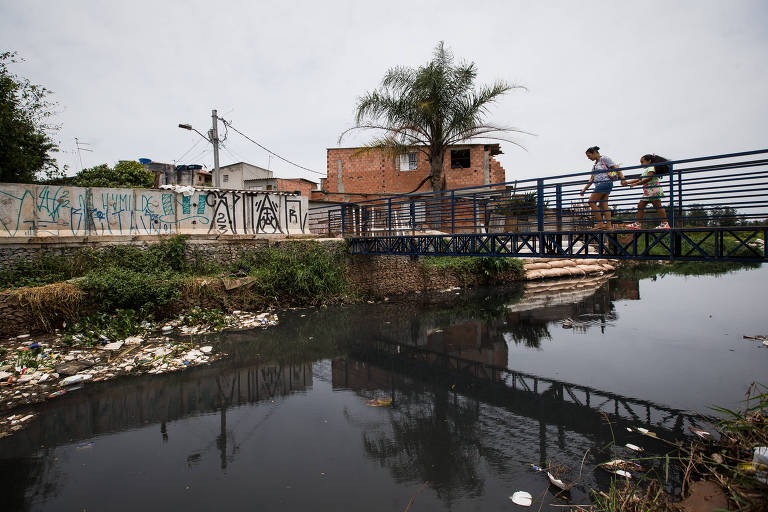In the wealthiest city in Brazil, entire communities still reside amid sewage. Excluded from basic services, people like Maria Auxiliadora expose the contradictions of the capital, which ranks seventh nationally in sanitation while leaving at least 660 thousand people without sanitary sewage—more than the entire population of Florianópolis.
Dora, as she is known, lives in Chácara Três Meninas, a favela in the east zone along the Tietê River, where about 3,000 families live. In 2019, Folha visited the location and spoke with the recycling professional, who had no piped water and sewage. In mid-November this year, the report returned to the site and found that, in the four years since, little has changed.
Life in the community continues to be surrounded by sewage, diseases, and infrastructure problems. The precarious situation in Chácara Três Meninas illustrates how the wealthiest city in the country still maintains pockets of people excluded from sanitation.
According to Sabesp, the sewerage collection coverage index in the municipality is 94%. As the concessionaire serves approximately 11 million people in the capital, this means that 660 thousand still do not have access to the service. However, the number may be even higher. According to Luana Pretto, president of the Trata Brasil Institute, service coverage data does not include irregular areas. Occupations, housing clusters, and communities are often excluded from the calculations, excluding a significant portion of the population.
The report requested an updated estimate from the São Paulo City Hall of how many people do not have access to sewerage collection in the city, but received no response to this inquiry.
